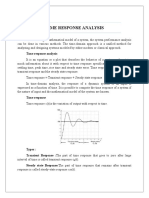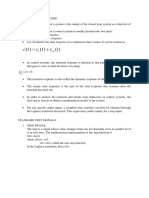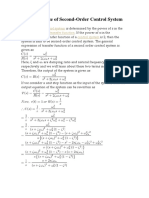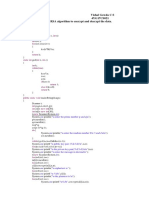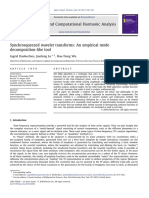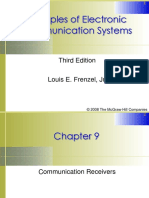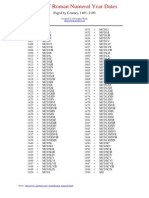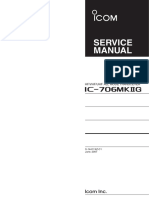0% found this document useful (0 votes)
36 views67 pagesModule 2 Full
The document discusses time response in control systems. It defines transient response as the output response until it reaches steady state, and steady state response as the output response after transient effects have died out. It then discusses standard test signals like step, ramp, impulse and parabolic signals used to analyze time response. Finally, it analyzes the step response of a second order control system and defines time domain specifications like delay time, rise time, peak time, overshoot and settling time.
Uploaded by
Rakshith HsCopyright
© © All Rights Reserved
We take content rights seriously. If you suspect this is your content, claim it here.
Available Formats
Download as PDF, TXT or read online on Scribd
0% found this document useful (0 votes)
36 views67 pagesModule 2 Full
The document discusses time response in control systems. It defines transient response as the output response until it reaches steady state, and steady state response as the output response after transient effects have died out. It then discusses standard test signals like step, ramp, impulse and parabolic signals used to analyze time response. Finally, it analyzes the step response of a second order control system and defines time domain specifications like delay time, rise time, peak time, overshoot and settling time.
Uploaded by
Rakshith HsCopyright
© © All Rights Reserved
We take content rights seriously. If you suspect this is your content, claim it here.
Available Formats
Download as PDF, TXT or read online on Scribd
/ 67



